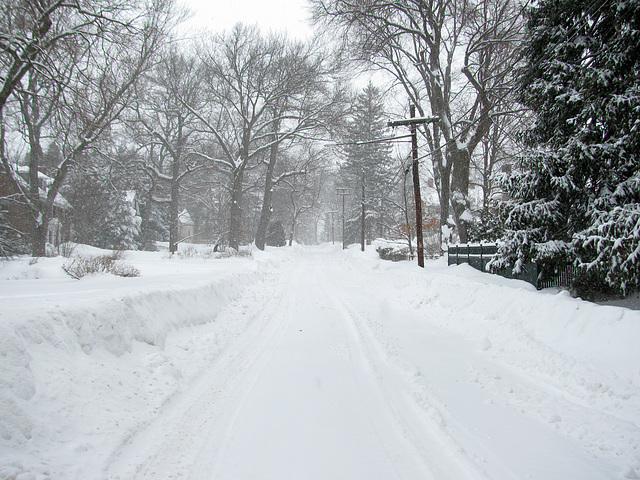
Explored
19 Aug 2013
16 favorites
17 comments
La Catedral (Explored)
La Catedral in the Plaza de Armas, Cusco, Peru.
"The Plaza de Armas was called ‘Huacaypata’ after its construction during the Inca Empire. The original plaza was twice the current size, and functioned as the cultural center of Inca life. Cuzco, which was the capital of the Inca Empire, was designed in the shape of a Puma to reflect their Inca animal mythology. Historians proclaim the plaza was intentionally built at the location of the heart of the Puma, in the center of the city. The location of the Plaza is no coincidence. The Plaza is used for most of the city’s events, gatherings, and festivals. Historians feel that the Plaza functioned as the cultural center, or "heart," of the Inca Empire.
In 1532 Spanish Conquistador Francisco Pizarro defeated the Inca Empire and took control of Cuzco, renaming the Plaza to "Plaza de Armas." The Spanish reduced the size of the Plaza by building two Churches, la Catedral and la Compañia. La Catedral was built where the palace of Inca Wirancocha once stood. La Compañia was built in 1571 by the Jesuits during the time of Wayna Capac, the last ruler of the unconquered empire. An earthquake in 1650 destroyed the church leading to its immediate reconstruction, which resulted in one of the most beautiful churches in Latin America. The Plaza de Armas portrays the city's diverse history while remaining the center of Cuzco life and culture."
www.pps.org/great_public_spaces/one?public_place_id=612
AIMG 1347
27 Jan 2015
20 favorites
28 comments
In the thick of it (Explored)
Blizzard of January 27, 2015. Another foot of snow was yet to come in this storm, followed by another 15 inches of snow in a storm five days later..
AIMG 4642
20 Aug 2013
14 favorites
14 comments
In a trance (Explored)
A Curandero, or native healer near Saqsaywaman, Peru
AIMG 1400
05 Feb 2015
27 favorites
27 comments
Radiate (Explored)
For The Sunday Challenge: Gadgets
This is a photograph of a corner of a standing fan edited with the posterize effect in Photoshop Elements
Fan 4658B
14 Feb 2015
36 favorites
38 comments
Happy Valentine's Day (Explored)
Happy Valentine's Day
AIMG 4684
09 Feb 2015
16 favorites
25 comments
This used to be a two way street (Explored)
Massachusetts is experiencing its second snowiest winter in history with over eight feet of snow and more on the way. This was shot two snow storms ago.
AIMG 2218
15 Feb 2015
17 favorites
18 comments
Winter baseball (Explored)
The snow clump "caught" by my dogwood tree reminded me of a hand throwing a ball.
AIMG 4693B
21 Aug 2013
28 favorites
21 comments
Huaca del Sol (Explored)
"The Huaca del Sol is an adobe brick temple built by the Moche civilization (100 CE to 800 CE) on the northern coast of what is now Peru. The temple is one of several ruins found near the volcanic peak of Cerro Blanco, in the coastal desert near Trujillo at the Moche Valley. The other major ruin at the site is the nearby Huaca de la Luna, a better-preserved but smaller temple.
By 450 CE, eight different stages of construction had been completed on the Huaca del Sol. The technique was additive; new layers of brick were laid directly on top of the old, hence large quantities of bricks were required for the construction. Archeologists have estimated that the Huaca del Sol was composed of over 130 million adobe bricks and was the largest pre-Columbian adobe structure built in the Americas. The number of different makers' marks on the bricks suggests that over a hundred different communities contributed bricks to the construction of the Huacas.
The Huaca del Sol was composed of four main levels. The structure was expanded and rebuilt by different rulers over the course of time. It is believed to have originally been about 50 meters in height and 340m. by 160 m. at the base. Located at the center of the Moche capital city, the temple appears to have been used for ritual, ceremonial activities and as a royal residence and burial chambers. Archaeological evidence attests to these functions.
During the Spanish occupation of Peru in the early 17th century, colonists redirected the waters of the Moche River to run past the base of the Huaca del Sol in order to facilitate the looting of gold artifacts from the temple. The operation of the hydraulic mine greatly damaged the Huaca del Sol. In total, approximately two-thirds of the structure has been lost to erosion and such looting. The remaining structure stands at a height of 41 meters (135 feet)."
en.wikipedia.org/wiki/Huaca_del_Sol
AIMG 1442
Jump to top
RSS feed- Latest items - Subscribe to the latest items added to this album
- ipernity © 2007-2024
- Help & Contact
|
Club news
|
About ipernity
|
History |
ipernity Club & Prices |
Guide of good conduct
Donate | Group guidelines | Privacy policy | Terms of use | Statutes | In memoria -
Facebook
Twitter










